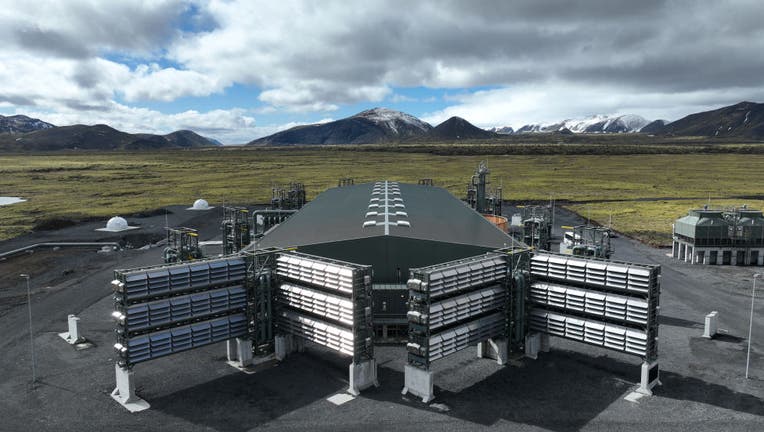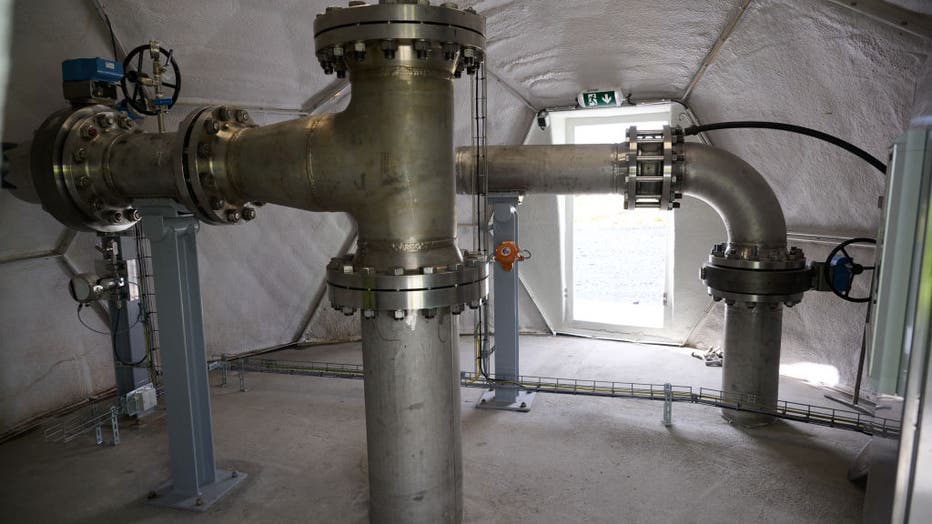World's largest plant to extract CO2 and turn it to stone opens in Iceland

A Swiss start-up unveiled on May 8, 2024 its second plant in Iceland sucking carbon dioxide from the air and stocking it underground, scaling up its capacity tenfold with the aim of eliminating millions of tonnes of CO2 by 2030.
In a significant step towards combating climate pollution, Swiss company Climeworks, which specializes in carbon dioxide removal technology, has launched the world's largest facility dedicated to removing carbon dioxide from the atmosphere.
The new plant, aptly named "Mammoth," began operations in Iceland this Wednesday, scaling up efforts to combat global warming through innovative technology.
What is Mammoth and how does it work?
Mammoth significantly scales up Climeworks' efforts to combat climate pollution. It uses advanced direct air capture (DAC) technology, which involves drawing air into the facility, capturing carbon dioxide through a chemical process, and then safely storing it underground.
This carbon is permanently turned into stone in collaboration with the Icelandic company Carbfix, ensuring it does not re-enter the atmosphere.

Dubbed Mammoth, the plant lies just a few hundred metres (yards) from its little sister Orca, a pioneering facility opened by Swiss start-up Climeworks in September 2021 in the middle of a moss-covered lava field about a half-hour drive from the capi
The opening of Mammoth comes at a time when global CO2 levels have reached record highs. With the planet facing severe climatic disruptions, technologies that can remove existing carbon from the atmosphere are becoming crucial.
Climework says Mammoth not only helps in reducing atmospheric CO2 but also serves as a potential blueprint for similar technologies worldwide.
What is carbon capture and can it combat climate change?
Carbon capture is a technology designed to remove carbon dioxide, a significant greenhouse gas, directly from the atmosphere.
Facilities like Mammoth, operated by Climeworks, use DAC technology to achieve this. The process involves drawing in air, capturing CO2 through a chemical reaction, and then securely storing it underground where it can be converted into stone and permanently isolated from the atmosphere.
Mammoth runs entirely on renewable geothermal energy sourced from Iceland, which underlines Climeworks’ dedication to sustainability. This approach ensures that the carbon capture process remains carbon-neutral by not adding further environmental emissions.

Report: Earth has 11 years to reduce carbon emissions to avoid climate catastrophe
Climate scientist Pierre Friedlingstein talks with FOX Television Stations' Chris Williams about his report that paints a grim picture for the earth if carbon emissions aren't reduced in 11 years.
Despite its potential, DAC technology like that used in Mammoth is often viewed skeptically due to its high costs and energy requirements. Critics argue that the focus should primarily be on reducing emissions at the source—fossil fuels.
However, Climeworks says it is working on reducing the costs of carbon capture, aiming to make this technology a more viable component of the global strategy against climate change.
This story was reported from Los Angeles.

